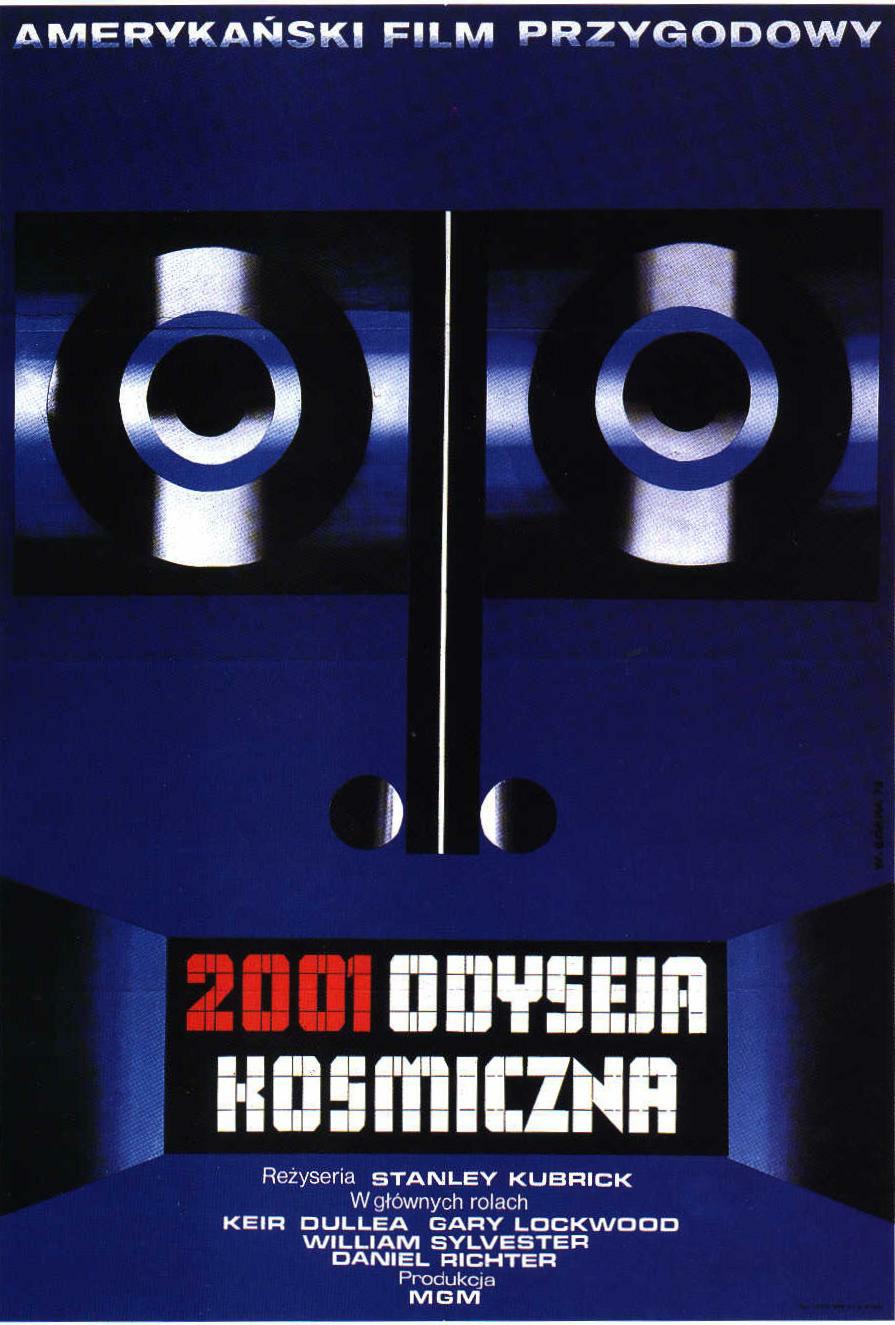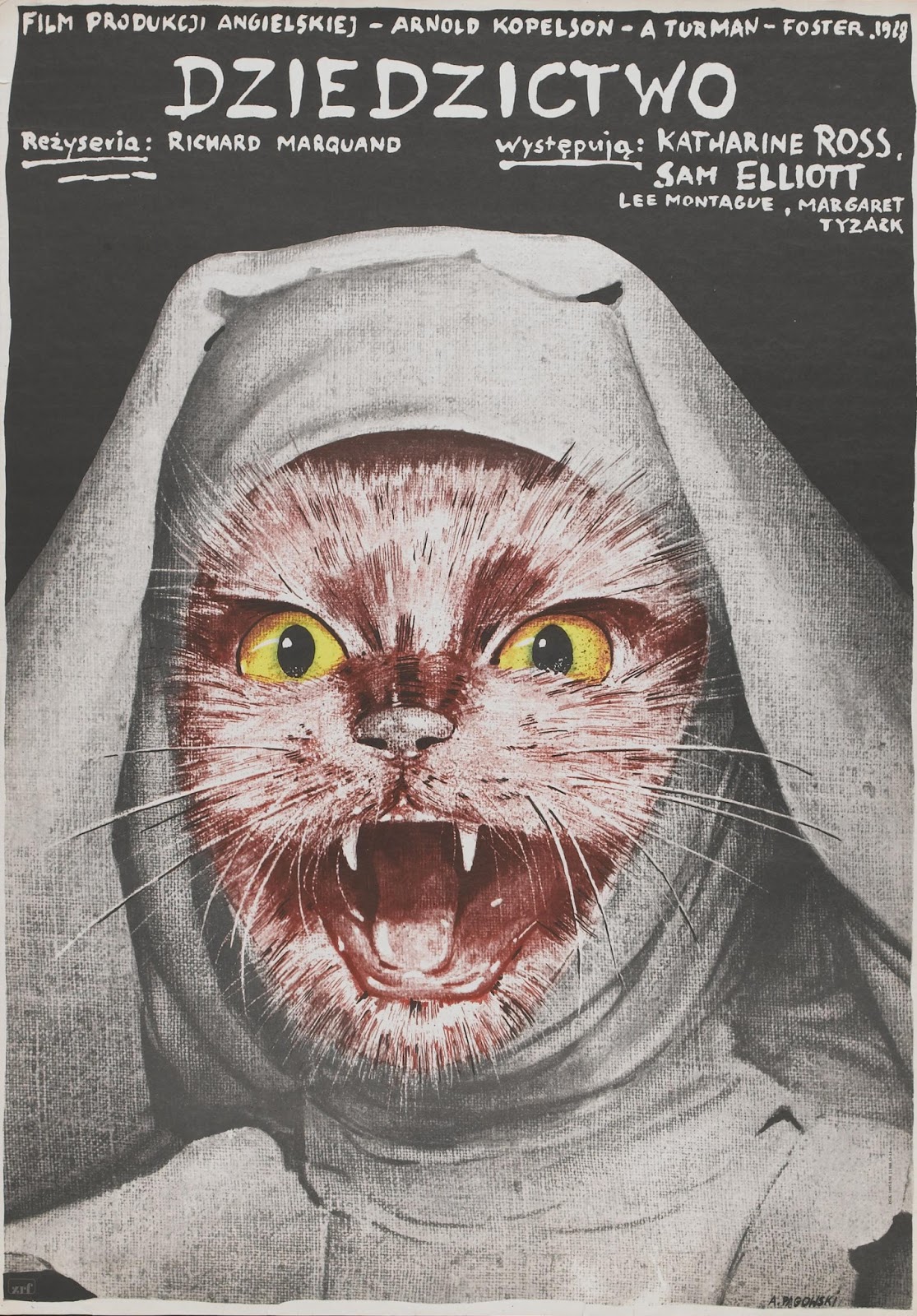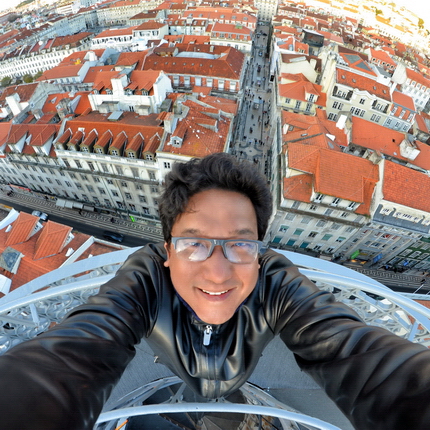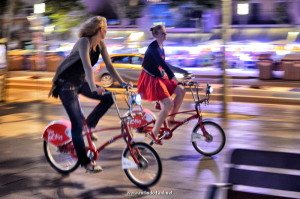
Apocalypse Now (1979)
Lending considerable prestige to the ‘stick-to-the-wall-and-tear-it-down’ medium of the poster, was the first International Exposition of the Poster held in Krakow, Poland in the fag end of the 19th century, 1898 to be precise. Jan Wdowiszewski, the then director of the ‘Technical Industrial Museum’ authored two essays devoted to the art of the poster, and in conceiving the Poster Exposition, tapped into the artistic vitality of Krakow of that era, and in turn laid the foundations of what will be later internationally known as Polish Poster Art. The artists associated with the initial poster years in Poland were from the Academy Of Fine Arts and were members of the Society of Polish Artists“Sztuka” – there was acceptability associated with creating posters of various kinds, and over the next century, this specific ‘zeitgeist’ saw some of the most remarkable visual expressions through posters, making them an identifiable and essential part of Polish culture. With Polish independence, post First World War, Tadeusz Gronowski, an architecture student at the University of Warsaw rose to the fore as one of the key ‘architects’ of Polish poster art, responding to the needs of an industrialized nation and the urgently required advertising communications. Gronowski’s work was marked by modernist, cubist impulses and an irreverence for visual tradition, a liberating move from the poster styles of the earlier periods. His work was carried further by later architects turned graphic artists from the University of Warsaw.
Communist rule in Poland in the post Second World War era saw the emergence of poster propaganda, where much of the representations were borrowed from the Soviet propaganda poster tradition. Much later, the very same control and structure of communist governance and administration gave rise to the most fruitful and artistically rewarding period in Polish poster art. In any case, it remains a good example of aesthetic innovation being fostered by political necessities. The period from the 1950s to the 1980s, saw the flowering and the gradual decline of this aesthetic impulse, marked by the acceptance and gradual rejection of communism in Poland. The film industry was controlled by the state. There were two main institutions responsible for commissioning poster designs and they commissioned not graphic designers but artists and as such each one of them brought an individual voice to the poster. The state wasn’t quite concerned much with how the posters looked, and in working outside the commercial constraints of a capitalist economy, the artists could fully express their potential. Take a look at some of the inventive poster voices from Poland of that era, interpreting English language cinema for a communist government and a domestic audience.

Godfather (1972)

Star Wars (1977)

Klute (1971)

Tootsie (1982)

Wallstreet (1987)

2001: A Space Odyssey (1968)

Return of the Jedi (1983)

The Legacy (1978)

Working Girl (1988)

Alien (1979)

Sunset Boulevard (1950)

Rosemary’s Baby (1968)

Cabaret (1972)

Strangers on a Train (1951)

The Terminator (1984)

 Photo Gallery
Photo Gallery You’re a role model sir, such awesomeness !!! :D
You’re a role model sir, such awesomeness !!! :D Still a fan of your unique and sweet finger strum on acoustic guitar. It made an ordinary guitar sound great. Would just love to see and hear one of those too.
Still a fan of your unique and sweet finger strum on acoustic guitar. It made an ordinary guitar sound great. Would just love to see and hear one of those too. Oldest operating bookstore
Oldest operating bookstore veryveryinterestingwebsite.have been visiting! thankyou!
veryveryinterestingwebsite.have been visiting! thankyou! Photo gallery
Photo gallery Absolutely amazing blog – a chest full of treasure.
Absolutely amazing blog – a chest full of treasure. Photo Gallery
Photo Gallery Photo gallery
Photo gallery great blog :)
great blog :) You’ll love this site by the awesome Milindo Taid
You’ll love this site by the awesome Milindo Taid i really like your blog – good interesting stuff as always !
i really like your blog – good interesting stuff as always ! You have inspired so many. :)
You have inspired so many. :) hope you’re changing the world as always :)
hope you’re changing the world as always :) Photo gallery
Photo gallery Photo gallery
Photo gallery This is by far amongst the best curated creative content sites out there and the eye and vision of one man, when good, works better than any funded team. Inspired enormously once again :)
This is by far amongst the best curated creative content sites out there and the eye and vision of one man, when good, works better than any funded team. Inspired enormously once again :) Your courses were always the best. By the way, just went through a bit of your website. It’s great! Some good stuff in there that I wouldn’t normally chance upon
Your courses were always the best. By the way, just went through a bit of your website. It’s great! Some good stuff in there that I wouldn’t normally chance upon Hi Milindo, hope you are inspiring many more around you…wherever you are!
Hi Milindo, hope you are inspiring many more around you…wherever you are! Photo gallery
Photo gallery You are awesome :)
You are awesome :) love ur pics…they are like those moments which u capture in your mind and wished u had a camera right at that moment to capture it…but u actually do capture them :) beautiful…!!!
love ur pics…they are like those moments which u capture in your mind and wished u had a camera right at that moment to capture it…but u actually do capture them :) beautiful…!!! Photo gallery
Photo gallery So glad you enjoyed my photos, really honored to be featured on your blog. thank you sir!
So glad you enjoyed my photos, really honored to be featured on your blog. thank you sir! Photo gallery
Photo gallery OMG its like a painting!! you have taken photography to another level!!!
OMG its like a painting!! you have taken photography to another level!!! Photo gallery
Photo gallery Photo gallery
Photo gallery We need more teachers like you :)
We need more teachers like you :) Photo gallery
Photo gallery Never thought I’d say this, but it was the most interesting classes I’ve sat in.. and of course, the day you played Sultans of Swing for us. Hope you continue to influence the next generations with your dynamic yet simple teachings.
Never thought I’d say this, but it was the most interesting classes I’ve sat in.. and of course, the day you played Sultans of Swing for us. Hope you continue to influence the next generations with your dynamic yet simple teachings. Photo gallery
Photo gallery #NowFollowing @Milindo_Taid One of the most influential n interesting mentor from my design school. Always loaded. :)
#NowFollowing @Milindo_Taid One of the most influential n interesting mentor from my design school. Always loaded. :) Milind never told u but u were my first true inspiration….I almost learnt the guitar watching u play…..thanx for being there
Milind never told u but u were my first true inspiration….I almost learnt the guitar watching u play…..thanx for being there Just detected your blog: impressive. wishing you continued inspiration and health.
Just detected your blog: impressive. wishing you continued inspiration and health. I discover TL of a writer and respected intellectual, with a tolerant, global conscience: @GhoshAmitav – tx @Milindo_Taid
I discover TL of a writer and respected intellectual, with a tolerant, global conscience: @GhoshAmitav – tx @Milindo_Taid With all the magical places you are checking off your bucket list! I want to know how to be you :)
With all the magical places you are checking off your bucket list! I want to know how to be you :) Photo gallery
Photo gallery Photo gallery
Photo gallery Photo gallery
Photo gallery I was just looking at your website… amazing it is… full of knowledge as always..
I was just looking at your website… amazing it is… full of knowledge as always.. Guitar in your hand reminds me of the MCRC days! You are terrific… :)
Guitar in your hand reminds me of the MCRC days! You are terrific… :) Grt milindo. eachtime want to check out something good on net…know where to go now!
Grt milindo. eachtime want to check out something good on net…know where to go now! Photo Gallery
Photo Gallery You are the only faculty member I could connect to!
You are the only faculty member I could connect to! Your website is full of delightful posts. I’m going to have to watch where my time goes when I’m visiting! :)
Your website is full of delightful posts. I’m going to have to watch where my time goes when I’m visiting! :) Its really good to see you Milindo, with such awesome stuff from you as usual.. loved your blog as well!
Its really good to see you Milindo, with such awesome stuff from you as usual.. loved your blog as well! Photo gallery
Photo gallery You are inimitable!
You are inimitable! Photo gallery
Photo gallery Photo gallery
Photo gallery Photo gallery
Photo gallery Love your site Milindo. I was excited to see you displaying my husband’s watermelon carvings
Love your site Milindo. I was excited to see you displaying my husband’s watermelon carvings